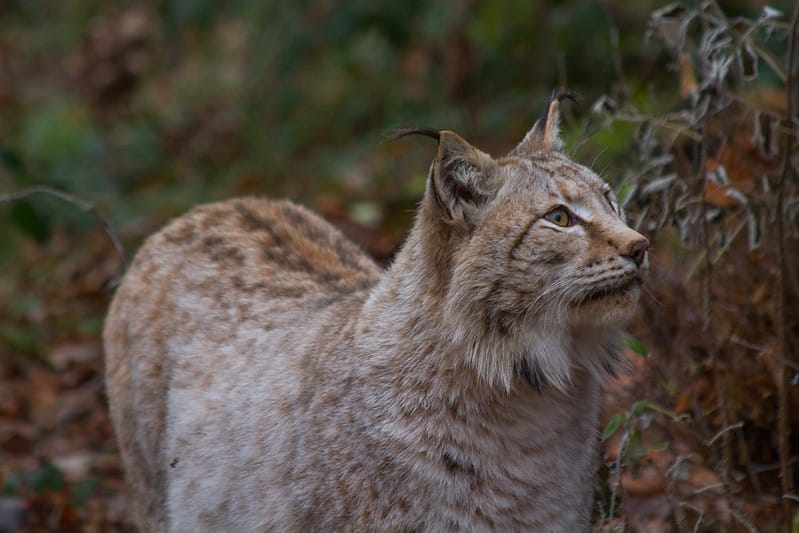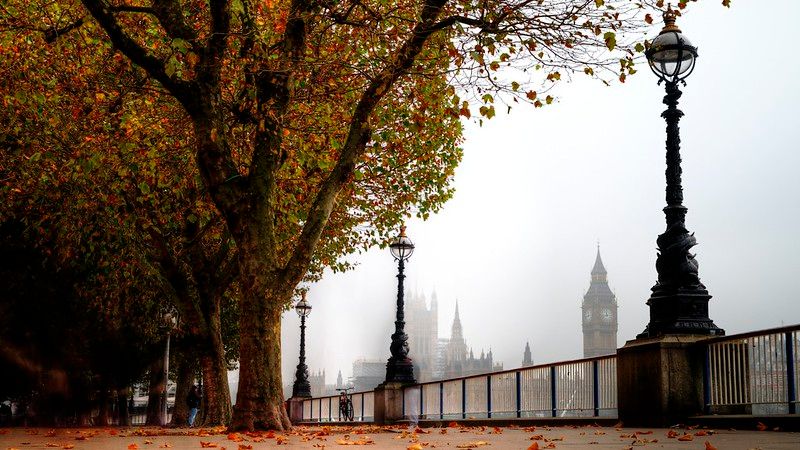
How London's trees became chronicles of climate change
As the climate warms, the urban landscape is changing – and the city's tree officers have a front-row seat.
When Simon Ffoulkes started working as a tree surgeon some 40 years ago, he says the business was a little like the Wild West.
He recalls free-climbing trees without ear defenders or protective clothing, and has a few scars to show for it. His fingers still sometimes go numb from nerve damage, the price of decades using a chainsaw – and one of the reasons he eventually joined the ranks of London’s tree officers instead.
The job may be less dangerous, but Ffoulkes certainly still sees a lot of trees. As part of a team of three, he's now tasked with caring for more than 30,000 of them spread across the streets and parks of Sutton, in south London.
Each year, Ffoulkes and his colleagues pound the pavement to inspect thousands of maples and magnolias, hornbeams and horse chestnuts, to see which ones are thriving, need trimming or are succumbing to disease.
On an overcast day in late April, I join him on one of his rounds. We’re on a residential street, where Ffoulkes has come to inspect a lime that is leaning precariously into the street.
He carefully places a heavy drill against the trunk of the tree, keenly aware that he's balancing several thousand pounds of technology. As he flips a switch, the drill bores a tiny hole all the way into the base of the trunk and spits out a graph on a small monitor.
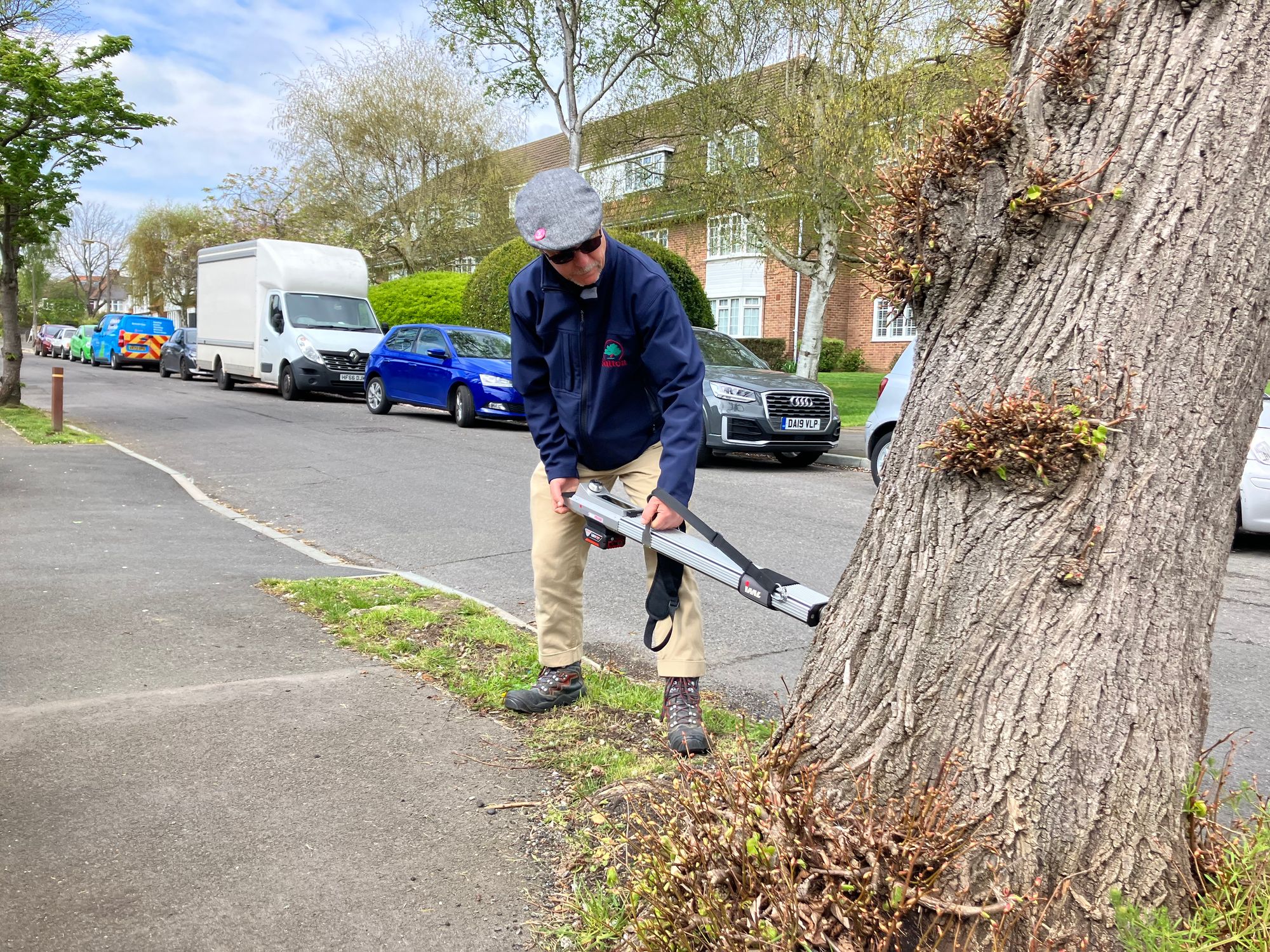
“Yep, there’s a drop-off in the centre,” Ffoulkes announces as he watches the neon green line plummet in real time. “It’s probably hollow."
Ffoulkes suspects a fungal pathogen has rotted the tree’s roots, likely causing the decaying bark and hollow trunk. For now, he will simply keep an eye on it, although he suspects it will have to be cut down eventually.
“You get it especially on lime trees in streets. Because they’ve had a hard life,” Ffoulkes says. “Any street tree has had a hard life. I mean, look at the environment it’s growing in."
Warming streets
Back at his desk, Ffoulkes pulls up a digital map of the council’s trees. Each plane, cherry and oak – there are roughly 50 species in all – has its own profile listing its age, condition and history. “You just click on one and it’ll tell you everything,” he says, zooming in on a sweet chestnut that recently had an epicormic growth removed.
Since 2008, each tree in London has also had a capital value assigned to it, primarily based on visual benefits. This is supposed to help with planning and preservation, but is also used in compensation claims. Based on data for a representative ward, Sutton’s trees alone are probably worth more than £100 million.
A large part of Ffoulkes' job involves keeping a close eye on subsidence – a widespread issue with London clay, which swells as it absorbs water in winter and shrinks heavily in dry summers. A thirsty tree will make the problem worse and, if it leads to damage, usually result in an insurance claim against the council.
The changing climate means the issue is only getting worse: the British Geological Survey predicts nearly half of the capital’s homes could be at greater risk of subsidence within a few years. Just the previous week, Ffoulkes’ team received three claims related to last summer’s heatwave.
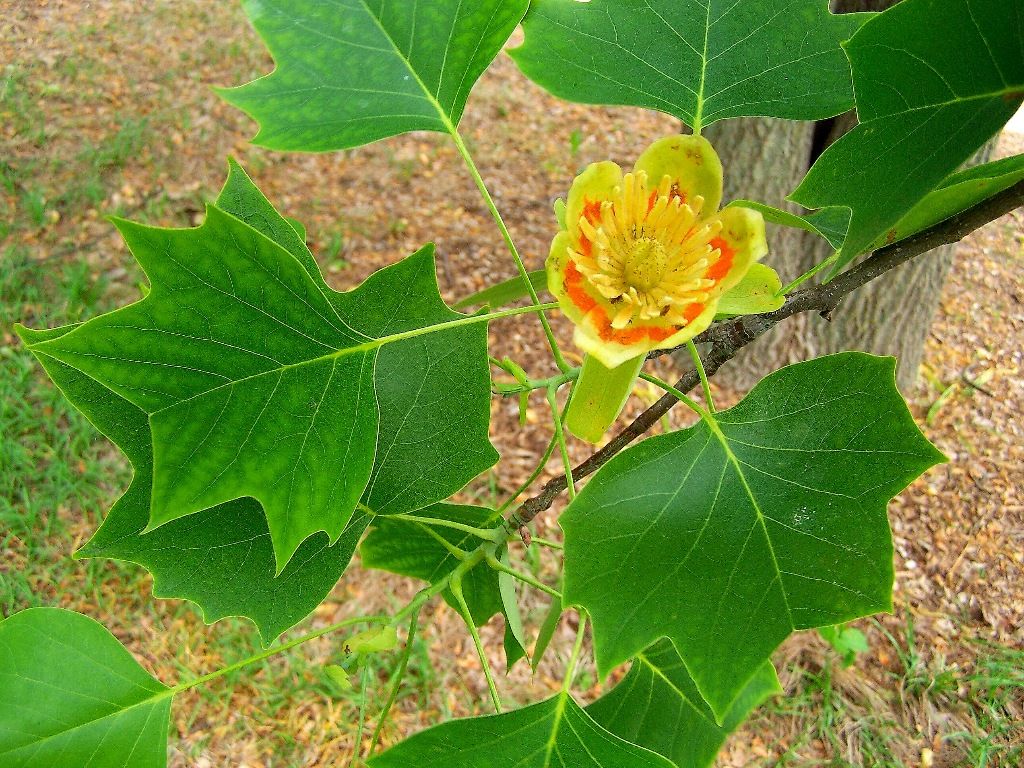
Working with trees for four decades means Ffoulkes has become an inadvertent chronicler of climate change in other respects, too.
Storms are getting more destructive. In 2022, Eunice felled hundreds of trees across the borough. At the same time, some species, like horse chestnut and beech, are obviously struggling in the hotter, drier summers, exacerbated by the urban heat island effect. Rainfall in the first half of last year was the lowest recorded in the UK since 1976.
A campaign by the Arboricultural Association now appeals to local residents to water street trees, especially younger ones, to help them survive drought and heatwaves. To give them a better chance, Ffoulkes has started building larger tree pits, wherever possible, and mulching more to stop grass and other plants from soaking up surrounding water.
He’s also switched to planting more robust species, including acacias, alders and certain types of oaks. Exotics like tulip trees and honey locusts do well, too. The change is even evident in his garden at home in Croydon, where he’s now growing apricots and peaches.
“The trouble is, if this happened over a natural timescale, trees would adapt,” Ffoulkes says. “But they don't move at that sort of speed.”
Preserving what's left
Notwithstanding climate impacts, pests like oak processionary moth as well as diseases such as chestnut blight and ash dieback claim the heaviest toll on London’s tree stock. That’s another reason Ffoulkes and his colleagues are looking to plant with more variety. “You don't want to have one single species so it gets wiped out,” he says.
Next, we head to Beddington Park – 58 hectares of formal gardens, lawns and woodland that form part of Ffoulkes' patch – where we survey an avenue of three dozen lime trees, each one hundreds of years old and in various stages of dieback.
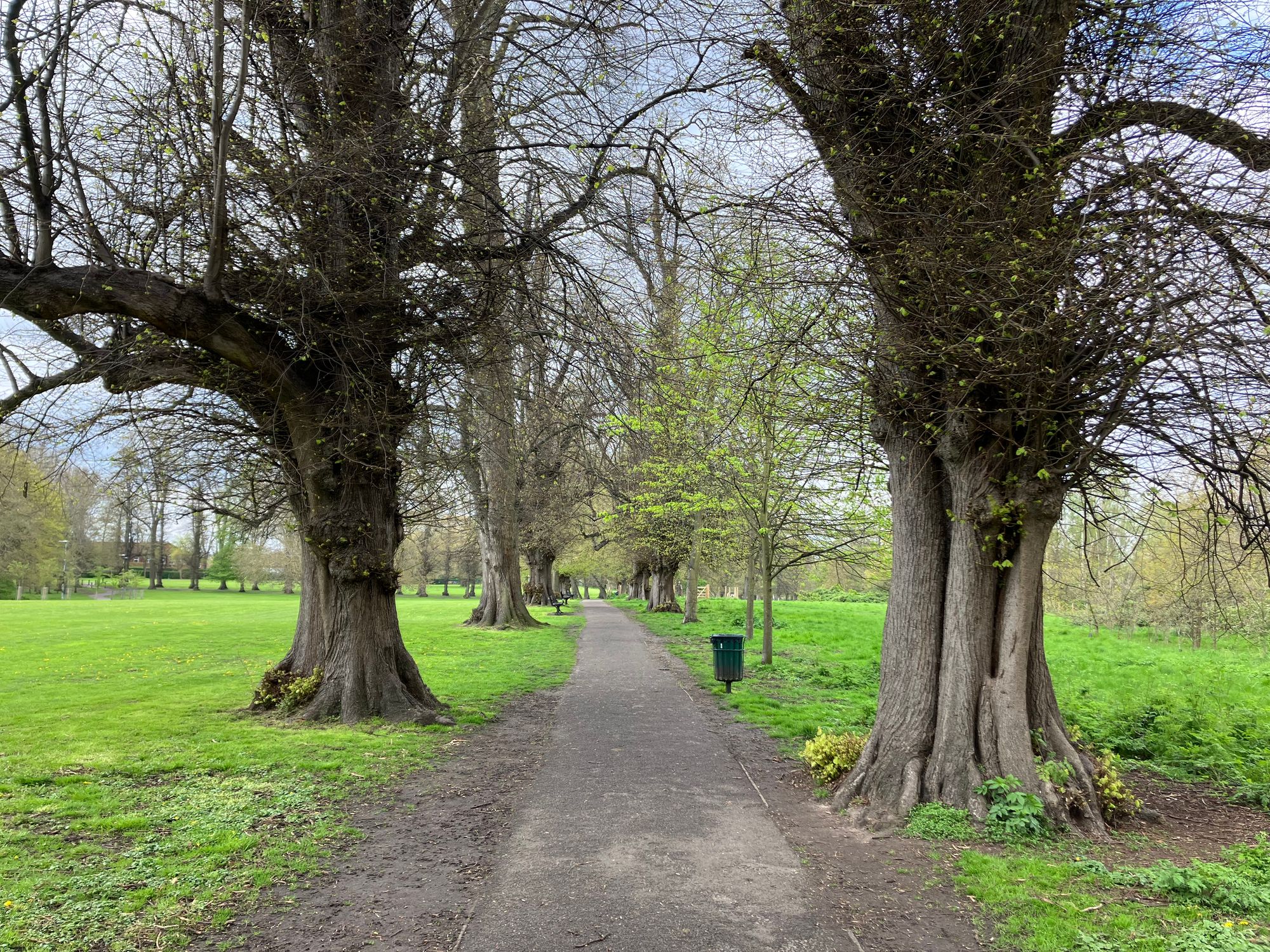
Ffoulkes points out large lumps of dead wood and several entirely decayed crowns. “That’s probably great for bats roosting,” he says. “But it’s a nightmare to manage.”
The main issue is safety. Although the only signs of life on this weekday morning are a woodpecker and a flock of parakeets, the avenue gets a fair amount of foot traffic. That means the worst hit specimens will have to be trimmed back considerably, or removed altogether, working around any winged mammalian residents.
Across the park, Ffoulkes points out the dead stumps of some old chestnuts, their trunks scattered among the grass. Though the decayed trees had to be cut down, their remains were left standing to provide habitat for insects and other animals. “It’s great for stag beetles and such,” Ffoulkes explains.
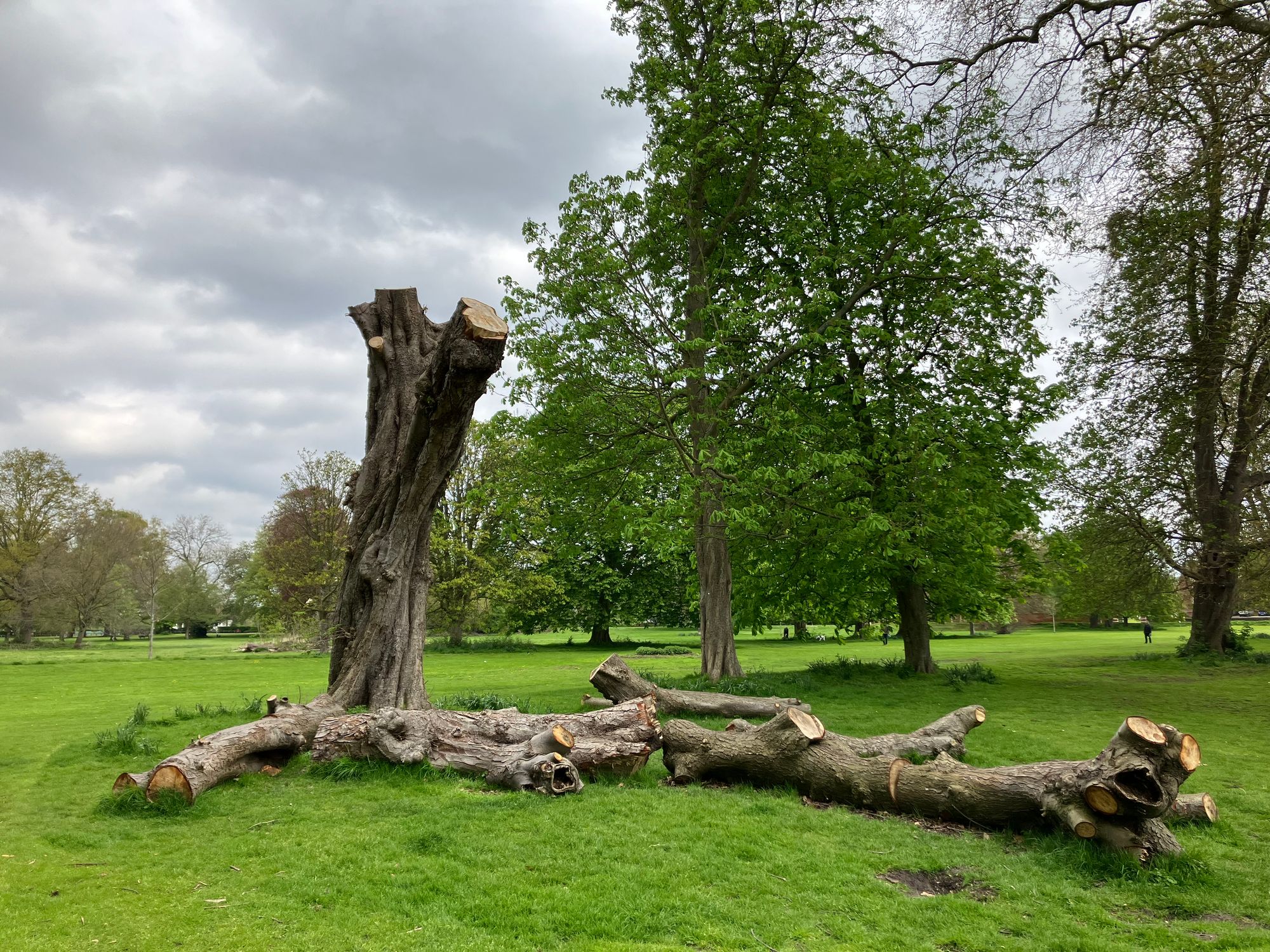
While he and his colleagues work to safeguard what biodiversity is left in public spaces, they have little control over what happens on private land – where, to Ffoulkes’ chagrin, a great many mature trees disappear every year.
A few weeks after our field trip, more than 130 mature trees are illegally cut down by a developer in Bromley, where Ffoulkes spent his first stint as a tree officer. He’s hopeful that strengthened regulations, which now mean anyone illegally felling a tree can face unlimited fines if prosecuted, will start to act as a deterrent.
After all, he points out, every mature tree that is lost – be it to greedy developers, rampant disease or the warming climate – is pretty much impossible to replace.
“In some cases, you’d need to plant 50 new trees to make up for what you’re losing,” he says. “It’s really about preserving what we’ve got."
Subscribe to our newsletter
Members receive our premium weekly digest of nature news from across Britain.
Comments
Sign in or become a Inkcap Journal member to join the conversation.
Just enter your email below to get a log in link.


